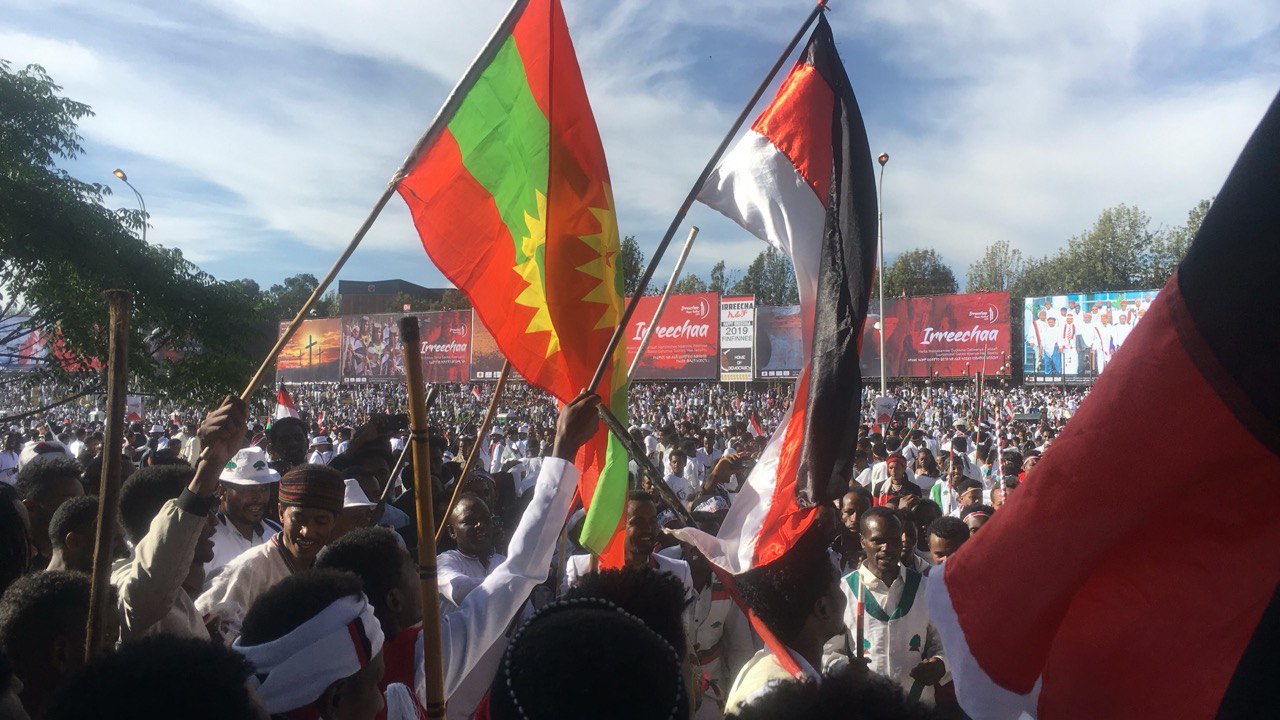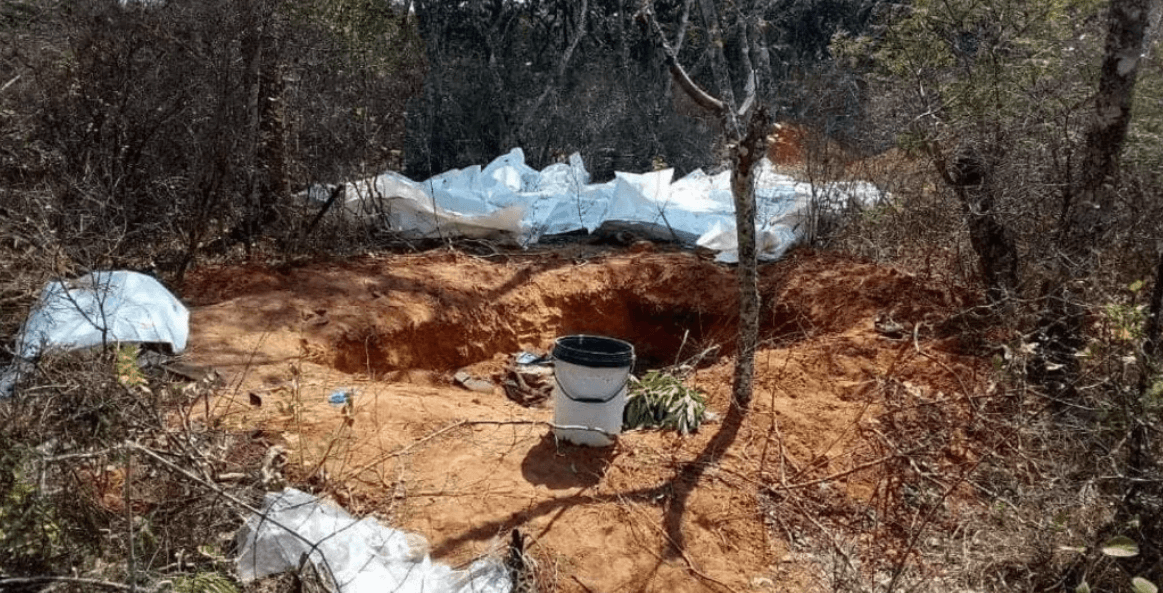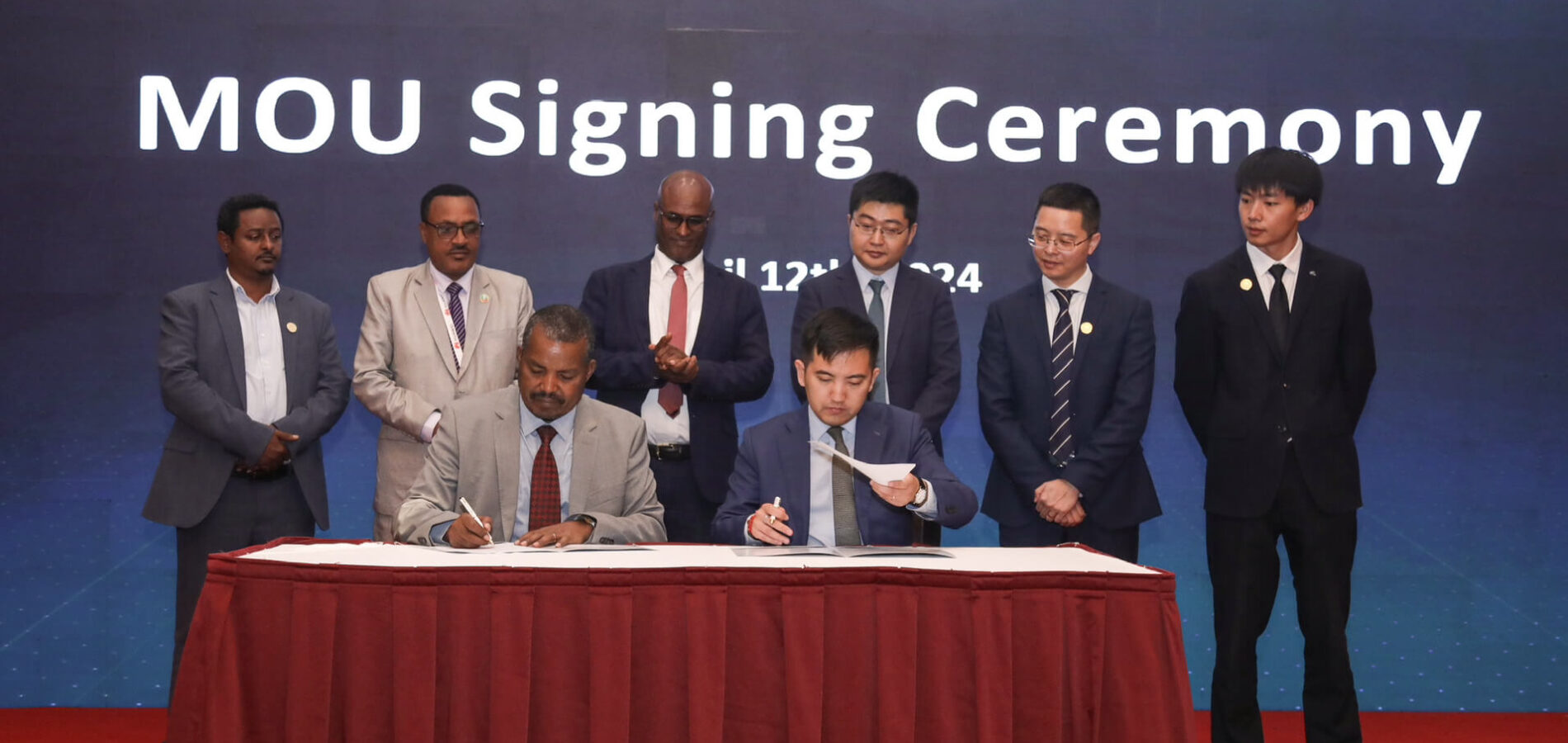#OromoProtests: The martinet’s message meets its match
Ezekiel Gebissa, special to Addis Standard
In his book, The Dictator’s Learning Curve, William J. Dobson argues that old-school dictators like Stalin, Pol Pot, Mao and Idi Amin ruled with unrestrained violence before the advent of Facebook, Twitter, YouTube, and other social media networks known for instantaneous communication. Contemporary dictators cannot keep their evil deeds secret even when those deeds are committed in the remotest corners of the earth. Dobson observes: “If you order a violent crackdown — even on a Himalayan mountain pass — you now know it will likely be captured on an iPhone and broadcast around the world. The costs of tyranny have never been this high.” [1]
But some new dictators, while as brutal as the old-school despots, have learned how to stay in power without appearing to work against the global rising tide seeking democracy. In Dobson’s assessment:
Rather than forcibly arrest members of a human rights group, today’s most effective despots deploy tax collectors or health inspectors to shut down dissident groups. Laws are written broadly, then used like a scalpel to target the groups the government deems a threat… Rather than shutter all media, modern-day despots make exceptions for small outlets – usually newspapers – that allow for a limited public discussion. Today’s dictators pepper their speeches with references to liberty, justice, and the rule of law.
Ethiopia’s late Prime Minister Meles Zenawi, though not featured in Dobson’s book, fits seamlessly the new dictatorship’s profile. Recognizing that naked intimidation was not suited to ruling in the era of “Third Wave Democracy” he peppered his speeches with the vocabulary of democracy, human rights and freedom. Noting his success in adjusting his rhetoric to new contexts, upon his death in August 2012, the Economist eulogized him as “The man who tried to make dictatorship acceptable in the world.”[2]
From the beginning of his rule, the late Meles recognized that winning the story is as important as winning the conflict in today’s world of instant communication and information dissemination. He skillfully constructed narratives that brought together sympathetic Western interests and Ethiopian groups who were wary of the new political dispensation of ethnic federalism. He created a narrative to delegitimize popular domestic political opponents. Whenever political imperative dictated, he readily switched to narratives that adjusted to changed circumstances.
Meles’s death in August 2012 not only removed the lynchpin on the intricate system he built but also deprived his successors of the mind that originated legitimizing narratives for the regime. The Oromo protests that broke out in last months of 2015 have shown that the regime in Ethiopia has lost its capacity to control the flow of information and to construct compelling narratives that meet the demand of the time. In this article, I highlight three political narratives that the late Meles constructed and deployed at different times, and how these narratives were used to legitimize the regime’s hold on power. I conclude my article by showing that despite these well established political narratives the ongoing Oromo protests have revealed that modern information technology has made it impossible for despots to rule an informed citizenry.
Ethiopia’s redeemer
In June 1991, the Tigrayan People’s Liberation Front (TPLF), followed by a few other rebel organizations, arrived in Addis Abeba and ensconced itself in power. After seventeen years of a military dictatorship (1974-91), the Ethiopian people were willing to give its new rulers a chance. Ethiopian People’s Revolutionary Democratic Front (EPRDF), a coalition of four parties, was subsequently formed after the collapse of the socialist Derg.
In the first years of its rule EPRDF sought legitimacy by offering the following narrative that supported its right to rule:
The TPLF liberated Ethiopia not just from evil incarnate, Mengistu Hailemariam, but also from the centuries-old Amhara ruling class domination and cultural hegemony. The liberation will not be secure until the vestiges of the Amhara ruling class are removed from power and cultural dominance. The Amhara elite, who often present themselves as unionist Ethiopians, are beneficiaries of the old systems who are bent on turning back the clock of history. The EPRDF is the only redeemer of Ethiopia who can guard the gains of the liberation against chauvinists and the neftagna (rifle bearing) class.
While the TPLF is the only credible political organization on a mission to reform and rebuild Ethiopia, it is not the enemy of Amhara. The Amhara’s true mortal enemy is the “narrow nationalist” lurking in the new region named Oromiya. To be specific, the Oromo Liberation Front (OLF) is the organization that massacred the Amhara in these places. In addition to its responsibility of saving the country from disintegration, the TPLF has the obligation to protect the Amhara from the narrow nationalist and administer justice against those who committed these crimes.
For this narrative to take hold, it was necessary to dislodge the Amhara elite’s political narrative that they were the custodians of a three thousand year old civilization. The late Meles, , who was at the forefront of the new leadership, often made pronouncements that many Amhara elite found irritating, such as: Ethiopia’s flag was a piece of cloth; Axum and Lalibela had nothing to do with the Oromo or other southern Ethiopians; and the notion that Eritrea was or is part of Ethiopia is without historical merit, and one that remains a fairy tale.
By attacking the symbols that Amhara elite cherished, the late Meles displaced the unionist, centrist, hegemonic narrative that had sustained them in power. Rather than offer an alternative, however, the Amhara elite opted for rehashing old issues. Perhaps believing that the ethnic groups in Ethiopia had assimilated into a single Ethiopian nation, they denied the very existence of an ethnic group called “Amhara.” They became vociferous opponents of Eritrea’s independence, accusing Meles of being as Eritrean President Isaias Afeworki’s lackey, and his party the TPLF Eritrea’s instrument in Ethiopia. The old narrative was doomed in the age of ethnic federalism.
For the Oromo elite, the narrative battle between the Amhara and Tigreans was a mere extension of a historical power struggle between the two Semitic nations in northern Ethiopia. Many interpreted the declaration of ethnic federalism as vindication of their own anti-neftegna narrative. Once the Amhara ruling class was eliminated, however, EPRDF, the coalition of four parties that was formed soon after 1991 with the late Meles still at the helm, turned its delegitimizing narrative against its second enemy, the Oromo elite, labeling them “narrow nationalists.” [3]
This narrative preceded the action of moving to destroy them:
The OLF is a secessionist organization committed to dismembering Ethiopia. It is a “narrow” and “extremist” organization that conducted the heinous massacre of defenseless Amhara at Bedano (Harar) and Arbagugu (Arsi). If the TPLF did not stop them, they would have kept on slaughtering the Amhara all over Oromiya. To prevent the OLF from repeating such atrocities, the TPLF has designed and successfully implemented a consistent operation against this Oromo anti-peace organization that is committed to destabilizing Ethiopia and derailing the country’s development efforts. And in this contest, the TPLF not only can win the war but it also can redefine war itself.
Like their Amhara counterparts, OLF leaders were unable to come to terms with this new strategy. They never presented a direct counter-narrative, but instead created appeals and arguments that emphasized the legitimacy of the right to self-determination, appealing to uninterested international audiences. Ethiopia’s new rulers successfully out-maneuvered these OLF leaders and created a rationale that justified imposing autocratic rule over the Oromo sector of Ethiopian society.
Overall, this narrative was designed to place the TPLF dominated EPRDF government as “Ethiopia’s redeemer” replacing Amhara and Oromo elite who were presented as “chauvinists” and “narrow nationalists” respectively. This kept the Oromo and Amhara elite in perpetual mistrust and conflict.
This narrative would have waned if it were not for the outbreak of the Ethio-Eritrean War of 1998-2000. The war stopped the substantial public criticism that the late Meles had endured since 1993 for facilitating Eritrea’s independence. Within the TPLF itself the way the war was conducted and ended launched a power struggle between two groups that came to be known as the Meles-Sebhat faction and the Tewelde-Siye faction. When the TPLF Central Committee debated and voted on the issue, the later prevailed over the former. The acrimony was shelved, however, in favor of a show of unity in the face of the ongoing war, which united both under the banner of defeating outside enemy – Eritrea.
Poverty eradicating Ethiopian patriot
But post Ethio-Eritrea war saw the ever powerful TPLF split into two factions. That gave the late Meles’s faction an absolute monopoly of power to conduct a massive purge against senior party officials who were accused of being “rotten Bonapartists” who exhibit anti-democratic tendencies, engage in corrupt practices and aspire to turn themselves into a ruling class. Some of them were subsequently charged and sentenced with grand theft and corruption. The purge did not stop within the TPLF but bruised the other parties in coalition with it. Notable purges were seen within the Oromo People’s Democratic Organization (OPDO); and The Southern People’s Democratic Organization (SPDO) saw its head and president of the region, Abate Kisho, sacked from his position and subsequently charged with corruption. All this was done in the name of democratic centralism, party integrity and national survival.
Ethiopia’s war victory, which was quick and decisive, gave the late Meles and the party he dominated the chance to switch the narrative from bashing Ethiopia to becoming Ethiopia’s savior. He appropriated the narrative that was developed for the war against Eritrea.
Paulos Milkias, writing in 2001, describes this as follows:
Meles abhorred and still abhors Ethiopian nationalism that he, for some unknown reason, considers “chauvinistic.” But to win the war, he reversed gear. The Ethiopian flag that he earlier referred to as just “a piece of rug” all of a sudden became a highly revered symbol that soldiers and politicians passed from hand to hand going on their knees and bowing low. The national TV was suddenly filled with the pictures of victorious Ethiopian emperors from Tewodros and Yohannes to Menelik and Haile Selassie. Axum and Lalibela that he earlier said had no relevance to the people of the south were suddenly transformed into historical treasures that the entire Ethiopian populace regardless of their background and ethnicity had to die for. All this was to combat Eritrean nationalism. [4]
To strengthen his newfound Ethiopian patriotism, the late Meles and his party stalwarts took public steps such as refusing to sign the border agreement with Eritrea and belittling the sprinter group as anti-Ethiopia power mongers. When the Eritrean-Ethiopian Boundary Commission, (EEBC), ruling in 2003 awarded the disputed region to Eritrea, Ethiopia rejected it. For Meles, it was a political move designed to shore up his position within his party and in the country as an Ethiopian patriot.
At the same time, the Oromo capital was ordered out of Addis Abeba and relocated to Adama. When Oromo students protested the relocation, they were herded into prisons in the thousands, expelled from Addis Ababa University in their hundreds. The Macha-Tuulluma Association was closed. Oromo “narrow nationalists” were now dubbed “anti-unity” and “anti-democracy.” This move further endeared Meles’s led EPRDF regime to the Amhara as an Ethiopian patriot.
In the process, the Amhara Nation Democratic Movement (ANDM) became the most important junior partner in the EPRDF coalition. Its members came to dominate the government. Oromo elders discovered their subordinate position when they petitioned the then university president, Prof. Andreas Eshete, to reverse the decision to expel university students. He rebuffed their entreaties. Oromo elder’s appeal to four additional ANDM officials fell on deaf ears. The late prime minister never met them.
It was around that time that the ruling party discovered in economic appeals another opportunity for legitimacy. Designed to the system’s critics and appeal to international interests conditioned by the United Nations Millennium Development Goals (MDG) and China’s growing engagement of Africa, EPRDF, still led by the late Meles, launched a campaign portraying poverty as an existential threat to Ethiopia in a longwinded speech to party apparatchiks in 2002.
The issue of poverty in our country today isn’t a matter of choice…Today, poverty is a matter of survival. It has become unsustainable. Even if we choose to live in poverty, the level of deprivation is so high that …our only choice is to confront poverty. Demographic pressure itself is bringing pressure on the existing resources. We must know the enemy. Our ultimate enemy is poverty, an enemy that is not against just our quality of life but an enemy threatening our very existence as a people. If we are not free from poverty, foreign aid and dependency, our sovereignty itself will be in question. [5]
Meles’ colossal “war on poverty” thus was launched emphasizing his new brand of Ethiopian patriotism. After vanquishing his intraparty opponents and the Eritrean challenge, Meles and the ruling party he so easily maneuvered to stay in the top felt confident that it was even possible to win contested elections as an Ethiopian nationalist and anti-poverty crusader.
It was in that context that Ethiopia held the 2005 disputed national elections; the oppositions Coalition for Unity and Democracy (CUD) – alias Kinijit in Amharic – and the United Ethiopian Democratic Forces (UEDF) competed on a political agenda that emphasized “national unity”. The gambit proved disastrous for EPRDF. The contest by the opposition block of the election results led to post election brutal crackdown by the government against unarmed protestors, killing hundreds, and a reversal of election results.
Coalition partners that form the EPRDF – ANDM (Amhara), OPDM (Oromo) SEPDM (Southern region) – were all routed in their respective regions demonstrating that the nations and nationalities they purported to represent saw them invariably as puppets of the ever powerful and dominant TPLF. The unprecedented success of the opposition shocked the EPRDF to the core and awakened it to the grim reality that it could never win free and fair elections. The CUD triumph represents the revival of the detested “Amharas” and revealed the inadequacy of EPRDF’s so-called nationalist narrative and its war on poverty.
It was time for the third narrative – the narrative of power consolidation.
Champion of the “Developmental State”
Having seen his party crushed in the 2005 elections, the late Meles busied himself and his party to come up with a new narrative and saw, in China’s experience, the narrative of an economic growth model under a one party domination. This was a ready-made economic narrative to justify a heavy handed approach towards opponents. In this new narrative, the late Meles boldly asserted the ritual of elections would be conducted only to confirm the incumbent in office until Ethiopia became a middle income country. This was a rather sophisticated political narrative that goes like:
Ethiopia does not have comparative advantage in any productive field, not even in the cost of labor. The country’s agricultural exports cannot compete in international markets. In these circumstance, the private sector, which would be needed for sustained growth, would go for the readily available way of seeking to make money through rent of all kinds including natural resource and foreign aid rather than the rigorous task of benefiting from creating value for customers. Because the private sector will be rent-seeking not value creating, the state must guide the private sector to the possibility of shifting to value creation.
The noninterventionist ‘night-watchman’ state, which allows only for the market to rule, is a second dead end. The ‘predatory state’ of Africa’s first post-colonial decades was one dead end. Ethiopia needs a capable state to lead development. To allow for technological capacity accumulation, which lies at the heart of development, Ethiopia needs an activist state that will allocate state rents in a productive manner. In other words, the government should also help by investing in education, research and physical infrastructure.
Ethiopia needs a ‘developmental state’ that is obsessed with value creation and obsessed with making accelerated and broad-based growth a matter of national survival. To succeed in this, we need to establish the hegemony of developmental discourse.
Once we make value creation to be dominant, it will serve as the foundation of democracy. If we don’t succeed, the result isn’t just failure of democracy. If we don’t grow fast and share our growth, we will cease to exist as a nation. [6]
Needless to say, however, this developmental state proposition is fraught with contradictions. The first is whether the federal arrangement can survive the developmental state. The renowned scholar Christopher Clapham has pointed out that there is an inherent contradiction between developmental state, which requires central control, and federal arrangement, which requires devolution of power [7]. The kind of state-led growth program that the developmental state envisions requires centralized macroeconomic planning and management which in turn demands effective control of resources, particularly land. This cannot be implemented without reviving the very problems the structure of Ethiopia’s current federalism was designed to resolve.
Second, the benefits of growth must be shared broadly if economic growth were to serve as the basis of legitimacy [8]. Since the launching of the developmental state, the nuveau riche appear everywhere and seemingly out of the blue. The party itself owns business worth almost a quarter of the national economy – calculating the net worth of four mega businesses owned by the EPRDF coalition partners EFFORT, TIRET, DINSHO and WENDO Trading. This, of course, excludes the MIDROC conglomerate and many shadowy family businesses owned by or affiliated with oligarchs who officially serve as government officials. Ethiopia’s economic growth achieved under this “developmental state” model fails to be broadly shared.
Third, the announcement of double-digit economic growth is an insidious scheme that has left many Ethiopians confounded. If the government’s claims are true, many Ethiopians ask, why are people food-insecure? Why are employed people unable to keep up with price rises for basic consumer goods? Why are university graduates unable to find employment? In short, why is life miserable and prospects for improvement increasingly dim as the country’s growth rate increases?
The simplest explanation for the disconnect between rhetoric and reality is that the government plays a numbers game with the Gross Domestic Product (GDP) approach to measuring development. Experts agree that the GDP doesn’t measure human welfare or the overall national economic health. I choose to focus on this specific issue because it relates to the Oromo protests that have rocked the country now for past four months. The Addis Abeba Integrated Master Plan, for example, highlights the contradictions in the ‘developmental state’ approach. In seeking control over land resources according to the Second Growth and Transformation Plan (GTPII), it proved that such a project cannot be implemented without provoking local resistance, requiring brute force from the state to quell it.
The Oromo protests of 2014 and 2015 were provoked by the arbitrariness of just such practices of land transfer. Around the country, the government offers prime farmland to foreign investors at less than market prices. In remoter areas, foreign investors are given a rent holiday or given land free of charge. The investor is allowed to export his harvest and the number is captured as GDP. The farmers who lost their farmland and their livelihood are hired as wage laborers if they are lucky; if not, they stand idly by and watch grain being trucked away from their former lands while they go hungry. GDP indeed grows but the people are hungry. This same government permits exporting hydropower while the country experiences daily blackouts. The kind of gobbledygook expose the developmental state is a political narrative designed to garner support for the regime rather than an economic policy meant to produce broadly shared benefits.
The undoing of the narrative of “Prosperity”
A quarter century after seizing power, the TPLF dominated EPRDF appears to have exhausted its options to construct narratives that delegitimize its opponents and legitimizes its rule. It is now revealed that the policies of the developmental state are not friendly to market forces. State control of land is shown to be antithetical to agricultural productivity as the looming famine demonstrates. The monopoly of party-controlled mega businesses and politically-affiliated private businesses have displaced individual ventures and given way to rampant corruption and uneven market structure. Because the realities on the ground have overtaken the rhetoric of the developmental state, the goal of creating a hegemonic developmental discourse has clearly run its course.
Prospects for constructing a new, workable legitimizing narrative are remote. The death of Meles Zenawi, the ever-creative fountainhead of new narratives has proved to be an irreplaceable loss. The developmental state narrative is exposed as a scheme for a political economy of banditry.
Led by Oromo protestors, Ethiopians have rejected a political economy that values the opulence of a shadowy oligarchy over ordinary human livelihood, and a development model that extinguishes human life in defense of private investments. No political narrative, however sophisticated, can persuade people that the deprivation they experience in daily life can be misconstrued as “prosperity.”
More importantly, modern media have made it impossible for the government to control flow of information and construct new narratives. The role of hundreds of individuals in reporting and spreading real-time information through Facebook and Twitter is a phenomenon that this government cannot combat effectively. Despite the government’s efforts to disrupt the flow of information, it cannot reverse the democratized field of the new media.
Oromo protesters are constructing a new Oromo narrative through sustained widespread resistance, new slogans and immense sacrifice. They have rejected totalitarian rule. They are demanding economic security, cultural regeneration, and self-rule in the Oromiya region. They have created an opening to look for common ground among all who reject the existing narrative to replace it with one that has the potential to shape the political scene in Ethiopia for the foreseeable future.
Ed’s Note: Ezekiel Gebissa is a Professor of History and African Studies at Kettering University in Flint, Michigan. He can be reached at egebissa@kettering.edu
End Notes:








